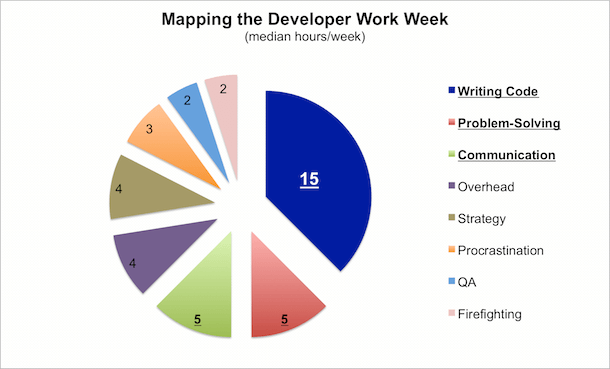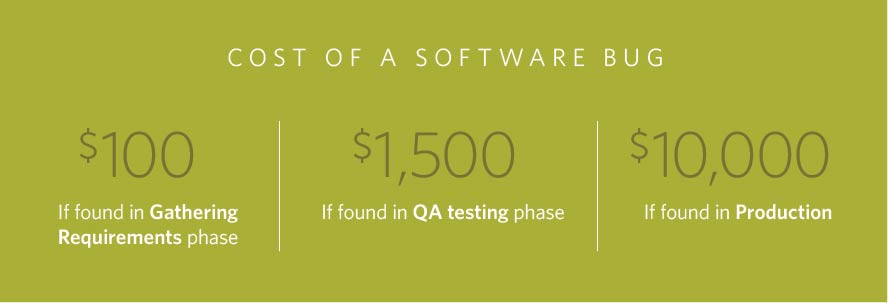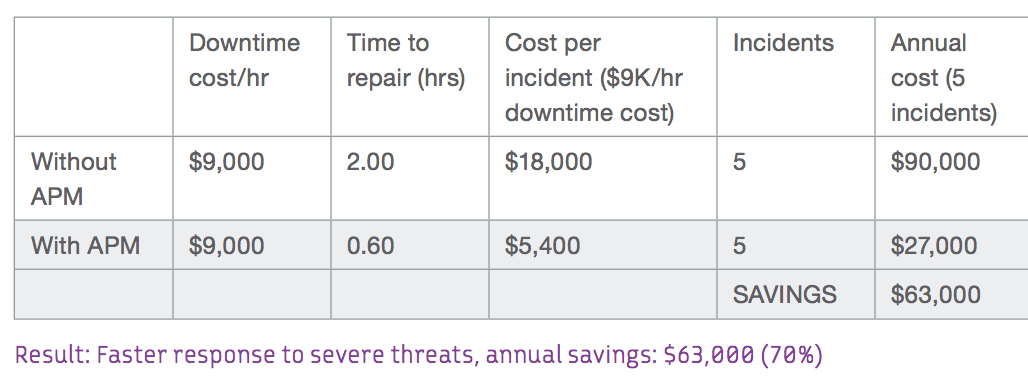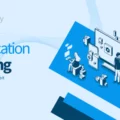6 Types of ROI for APM (Application Performance Management Tools)
By: mwatson
| March 14, 2024

It has been said that nearly every business is now a software business in some form or another. That means that the reliability and performance of their software applications are critical to their success. Unfortunately, many application performance management (APM) tools have been very expensive and targeted at only large enterprises.
The price of APM for 20 servers can range from $500 to $6,000 a month. Some vendors also require being paid annually. It is common for us to hear from customers that they can try our product, Retrace, for a few hundred dollars a month or pay another vendor $25,000 and they are stuck in an annual contract.
APM solutions can be affordable and have a priceless return on investment (ROI) if used to their full potential. In this article, we are going to discuss some of the key benefits of APM and how they provide an excellent ROI.
APM ROI Examples & Other Benefits
1. Increasing Developer Productivity
Software developers are expensive. They are also a highly limited resource in today’s economy. It is important to keep them working on innovating new products that can grow your business. Developer tools that make them more productive are highly valuable.
Solving production problems can be very hard and time-consuming. APM tools are designed to help developers quickly identify application problems.
If APM can save your developers a few hours of time a month, it is easy to see how quickly it pays for itself. ZeroTurnaround’s developer productivity report showed that the average developer spends at least a couple hours a week firefighting production problems.

2. Preventing Application Problems
The earlier an application problem is identified and fixed in the development lifecycle, the less time and money it takes. In a perfect world, we would all like to find every application problem while developers are writing the code or in QA.
Tools like Prefix and Retrace can do exactly that. Prefix is free, and Retrace pricing is flexible based on traffic volume. It is pretty hard not to justify the cost if it can help identify problems before they get to production.
It is easy to understand that finding bugs while writing code or in QA are much easier to fix than in production. A simple production bug can also cause dozens or hundreds of support issues with your clients. The last thing you want to do is overwhelm your support or sales teams with handling upset customers.
Here is a rough estimate of what it may cost to fix a software bug by Celerity.

3. The Cost of Downtime
The other day I was ordering pizza on Pizza Hut’s website. If their website was slow or down for any reason, I could have easily ordered pizza from a dozen other companies. Every minute that their website is down has a big impact on their sales for the day and their bottom line.
Delta Airlines had a 5-hour outage in August 2016. The computer problems forced them to cancel about 2,000 flights. They reported that it cost them 150 million dollars. British Airways and Southwest also had outages last year that caused them a lot of money.
Proactive application monitoring can help identify problems before they become worse. From finding sluggish SQL queries to identifying high volume requests that should be optimized.
Being able to quickly identify the root cause of a problem can drastically reduce the mean time to repair (MTTR).

4. Performance as a Feature
Keep in mind that performance is also a feature of your application. Users love fast software. It creates an overall higher sentiment for your product. It may be hard to quantify, but it helps with customer conversions and retention.
Slow performance can impact your bottom line. Amazon found every 100ms of latency cost them 1% in sales. We can all relate to trying to buy something online and stopping because it was taking too long.
It could be that the kids are screaming, It’s time to go dinner or some other reason. We sometimes tell ourselves we will look at it later when we have more time. Many times we don’t remember or spend our money on something else. “I almost bought one of those” is the last thing any retailer wants to hear.
One of our clients provides small loans to their customers online. Their website was taking 10-15 seconds to load and couldn’t figure out why. They were able to use Retrace to identify that caching was not working properly. After applying the fix, they were immediately able to see a substantial increase in business.
5. Reducing Hosting Costs
APM products are very helpful for measuring the performance of your applications and helping to identify opportunities for improvement. A SQL query tweak here, some code refactoring there, and you might able to lower your hosting costs through some optimizations.
For example, At Stackify we had one application that ran on about 20 servers. By using Retrace to identify potential performance optimizations, we were able to refactor some code and reduce the number of servers by 50%. That simple change saved us $2,000 a month.
APM tools can help you understand how your applications use SQL databases, Elasticsearch, web services and much more. We hear all the time from clients that they had no idea how many SQL queries their application was running or how slow the queries were. A little performance tuning around application dependencies can improve overall performance and allow you to scale down those dependencies.
6. SLA Requirements
Many B2B companies have service level agreements (SLAs) with their partners. These agreements typically have clear penalties written into them if their software is not online and working properly.
A short outage by Amazon AWS in February 2017 will reportedly cost them 2% of their total revenues due to SLA credits. A short 5-hour outage likely cost them millions in revenue. Their outages caused problems for many clients including Apple, Adobe, and Netflix.
Amazon reportedly had to refund 10-30% in service credits. Many vendors offer service credits based on how bad the SLA was missed. Here is an example of a table that defines how a breach in SLA is handled.
| Percentage Uptime |
Percentage Credit |
| 98% or greater but < 99.7% |
2% |
| 97% or greater but < 98% |
3% |
| 96% or greater but < 97% |
5% |
| 94% or greater but < 96% |
10% |
| 90% or greater but < 94% |
50% |
| Less than 90% |
100% |
Conclusion
In this article, we covered a few of the ways that APM tools provide a very high ROI. They can help with developer productivity, prevent application problems, reduce hosting costs, optimize performance and prevent costly downtime.
Most importantly, APM tools can help you sleep at night.
They help you proactively keep an eye on the performance of your applications around the clock. They are also there when you need them to jump in and quickly solve a problem.
The price and functionality of APM tools vary wildly. Check out our list of the top 10 critical APM features. You may also want to read about the affordability of APM products and how they are now affordable for smaller companies.
Application monitoring tools don’t have to be crazy expensive. Stackify’s goal from day one was to make an affordable and holistic suite of application monitoring tools. Retrace combines lightweight code profiling, application errors, logs, metrics, and much more in one easy to use tool for developers.
Retrace pricing is very affordable and is flexible based on traffic volume. Start your trial today.
Improve Your Code with Retrace APM
Stackify's APM tools are used by thousands of .NET, Java, PHP, Node.js, Python, & Ruby developers all over the world.
Explore Retrace's product features to learn more.
Learn More









